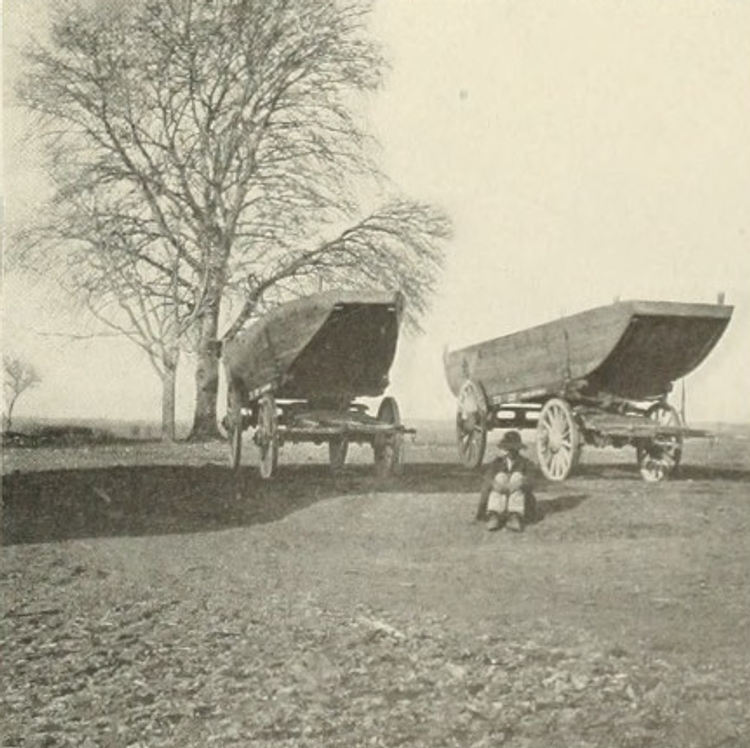 |
| Movement to Fredericksburg |
Burnside had moved his army to Fredericksburg in a hope to quickly cross the river and get around Lee's flank. But his plan had failed when the pontoon bridges did not arrive, and he did not move quickly to find another way across the river. Now, as the Federals began their river crossing 150 years ago today, they were facing Lee's entire army on the heights across the river.
 |
| Pontoons |
Burnside had several options for crossing the Rappahannock River, but he chose the one he thought would be least expected. Instead of attempting a flanking movement, he would strike directly across the river into Fredericksburg, hoping that Lee by guarding other crossings had weakened his center enough for Burnside to have a chance there. Fredericksburg would be a tough nut to crack. On either side of the river were high bluffs, Strafford Heights on the Federal side and Marye's Heights on the Confederate, and in between on the southern side of the Rappahannock was the town of Fredericksburg. Lee had over 70,000 men in his two corps, half the number of Burnside. They had recovered from their reverse at Sharpsburg and had, increased in numbers and morale. They were confident that they could put up a good fight and whip the Union army, even with its new commander.
 |
| Pontoon Crossings at Fredericksburg |
On December 11th, 150 years ago today, the Union engineers began working to assemble the pontoon bridges around Fredericksburg. Their work would not go on unopposed. Guarding the town itself was the Mississippi Brigade of Brigadier General William Barksdale. His sharpshooters, hidden in the houses of the town, were well positioned to shoot down the Yankees working on the bridge. The Federals tried to meet this threat with an impressive bombardment, 150 cannon raining down shells into the town. But the Mississippians, protected by the houses, were mostly unhurt by the fire.

As the guns died down, the bridge builders rushed forward. Barksdale's men picked them off with their rifles, foiling several efforts to put the six pontoon bridges across the river. Lee had told Barksdale that he was free to retire, as all was ready on the heights to receive a Union attack, but Barksdale replied, "Tell General Lee that if he wants a bridge of dead Yankees, I can furnish him with one!" The Mississippians drove back nine Federal attempts to cross the river.
 |
| Henry Hunt |
At this juncture Burnside was convinced by his artillery commander, Brigadier General Henry Hunt, to send landing parties across in boats to establish bridgeheads and clear out the sharpshooters. Colonel Norman Hall volunteered his brigade, and with the army commander's approval, set off in small boats. Although losing some men along the way, they were able to dash across the river, land and began a fierce house to house fight with the rebels. Falling back slowly, in constant contact with the Union troops, Barksdale did not return to the safety of the Confederate lines until after dark. One small Mississippi brigade had held up the entire Union army for a day. But it would take more than that for the Confederates to prevail in the coming days of the Battle of Fredericksburg.
 |
| William Barksdale |








1 comments:
War is a fascinating subject. Despite the dubious morality of using violence to achieve personal or political aims. It remains that conflict has been used to do just that throughout recorded history.
Your article is very well done, a good read.
Post a Comment